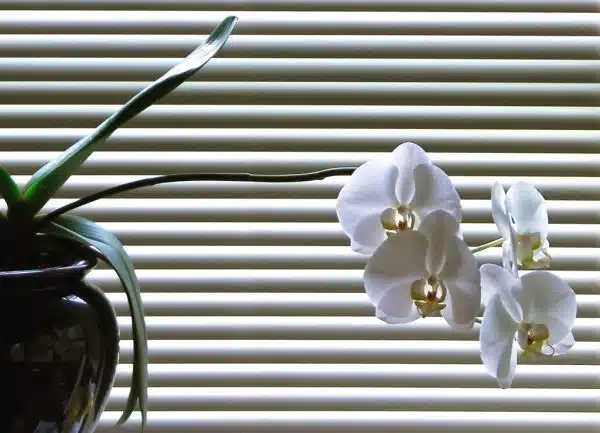When it comes to window treatments, curtains and blinds are among the most popular options. While each has its own benefits, combining them can create a look that is functional and stylish. Hanging curtains over blinds is a great way to add texture, color, and personality to your space while also providing privacy and light control.
However, finding the right way to combine these two treatments can be challenging. Whether you want to layer curtain panels over wood blinds or hang sheer curtains over roller shades, there are several factors you need to consider in order to achieve the perfect balance of form and function. In this article, we will discuss some tips and tricks for hanging curtains over blinds successfully, so that you can create a beautiful and practical window treatment solution for your home or office.
Understanding The Benefits Of Combining Curtains And Blinds
Like a well-tailored suit, curtains and blinds can work in harmony to create a polished and put-together look for any room. When layered properly, the benefits of combining curtains and blinds go beyond just aesthetics. Not only do they offer enhanced privacy and light control, but they also provide insulation against drafts.
One of the major benefits of layering curtains over blinds is the added depth and dimension it brings to a space. This design technique creates visual interest while adding texture and softness to an otherwise utilitarian element. Additionally, by coordinating the colors and patterns of your curtains with your existing decor, you can tie together the overall theme of your room seamlessly.
When considering window treatments for your home, it’s important to assess your needs beyond just style. Curtains and blinds each have their own unique set of advantages that can help address practical concerns such as insulation or light control. By understanding the benefits of both types of window treatments, you can make an informed decision that best suits your specific needs while still maintaining a cohesive look throughout your space.
Assessing Your Window Treatment Needs
Combining curtains and blinds can elevate the look of any room while providing privacy, light control, and energy efficiency. Understanding the benefits of this combination is essential before deciding on your window treatment needs. By combining curtains with blinds, you can achieve a layered look that adds depth and texture to your space.
When choosing colors for your curtains and blinds, it’s important to consider the overall color scheme of your room. Neutral colors are always a safe option as they complement most color palettes. However, don’t be afraid to add a pop of color or pattern to create visual interest in your space. Coordinating patterns can also enhance the overall design of your room while providing a cohesive look.
Here are four key points to keep in mind when selecting the perfect combination of curtains and blinds:
- Determine the level of privacy and light control you need.
- Consider the size and shape of your windows.
- Choose materials that suit your lifestyle.
- Decide on a style that complements your existing decor.
By following these tips, you can select window treatments that not only match but also enhance the aesthetic appeal of your home. In the next section, we’ll explore how to choose the right type of blinds for your space based on functionality and design preferences.
Choosing The Right Type Of Blinds
When it comes to choosing the right type of blinds to hang curtains over, there are two main options to consider: vertical and horizontal. Vertical blinds have individual slats that run vertically, while horizontal blinds have slats that run horizontally. The choice between the two largely depends on personal preference and the style of the room. Horizontal blinds tend to create a more traditional look, while vertical blinds can give a modern twist.
Another factor to consider is whether you want motorized or manual blinds. Motorized blinds allow for easy control with the touch of a button, making them an ideal option for hard-to-reach windows or if you simply want added convenience. Manual blinds require a bit more effort but can be more cost-effective and may fit better within certain design schemes.
To help make your decision easier, below is a table outlining some of the main differences between vertical and horizontal as well as motorized and manual blinds:
| Type | Pros | Cons |
|---|---|---|
| Vertical Blinds | Modern look, easy to clean, good for large windows | Can be noisy when opening/closing, not as durable |
| Horizontal Blinds | Traditional look, versatile in terms of light control | More difficult to clean, can collect dust easily |
| Motorized Blinds | Easy to use, convenient for hard-to-reach windows | More expensive upfront cost |
| Manual Blinds | Cost-effective option, fits well within certain design schemes | Requires more effort to open/close |
Choosing the right type of blind is an important step in ensuring that your curtains hang properly and enhance the overall aesthetic of your room. Consider your personal preferences in terms of style and functionality when deciding between vertical or horizontal and motorized or manual options.
The next step in creating the perfect window treatment is selecting the perfect curtains. With so many styles and fabrics to choose from, it’s important to consider factors such as color scheme, texture, and light control. Keep reading to learn more about how to choose the perfect curtains for your space.
Selecting The Perfect Curtains
When selecting the perfect curtains, there are several important elements to consider such as style, color, fabric, length, width, privacy, light control, pattern, rods, hardware, finials, linings, thermal insulation, sheers and valances. Each of these elements may have an impact on the overall look and feel of a room, as well as its function. It is important to understand the purpose of each element and how the combination of them will create the desired atmosphere. Therefore, when selecting curtains, it is important to carefully consider the characteristics of each element in order to make the best choice.
Styles
When it comes to selecting the perfect curtains to hang over blinds, one must consider the different styles that are available in the market. Each style has its unique features that can complement or contrast with the blinds. Color combinations and texture play also have a significant role in determining which style would work best for a particular room.
Firstly, there is the classic and timeless style of traditional curtains. These curtains feature long panels of fabric that extend from the top of the window frame down to the floor. They come in a variety of colors and patterns, making it easy to find one that matches or complements the existing color scheme in a room. Texture play can also be incorporated by selecting fabrics such as velvet or linen that add depth and interest to the overall design.
Secondly, there is the modern and minimalist style of sheer curtains. These curtains are made from lightweight fabric that allows natural light to filter into a room while providing privacy from outside view. Sheer curtains come in various colors but are generally translucent or white, making them ideal for rooms with neutral color palettes. Texture play can be added by selecting sheer fabrics with subtle patterns or embroidery.
Lastly, there is the trendy and eclectic style of layered curtains. This style involves layering two different types of curtains on top of each other for an eye-catching effect. For example, combining sheer curtains with blackout curtains creates both privacy and light control options while adding visual interest through texture play. Bold color combinations such as pairing navy blue and mustard yellow can create a statement piece in any room.
In conclusion, when choosing curtain styles for hanging over blinds, it is essential to consider color combinations and texture play along with personal preferences regarding function and aesthetic appeal. Whether choosing traditional, modern, or layered styles, each option offers unique features that can enhance any room’s design aesthetic without compromising functionality.
Colors
When it comes to selecting the perfect curtains for a room, the color of the curtains can play a significant role in enhancing the overall design aesthetic. Color can set the mood for a space and create an ambiance that complements or contrasts with other elements in the room. One popular trend in curtain color selection is to mix and match bold and neutral colors to create a unique look.
Bold colors such as deep blues, rich reds, or vibrant greens can add a pop of color to an otherwise neutral room. These colors work well when paired with white or beige walls, furniture, or blinds. On the other hand, neutrals such as grays, browns, or creams can create a calming effect when used as curtains in a room with bold-colored walls or furniture. Mixing and matching bold and neutral colors creates contrast and depth that adds interest to any space.
Another option for selecting curtain colors is to complement existing decor by choosing hues from within the same color family. For example, if there are blue accents throughout the room, consider selecting curtains in shades of blue or teal. This creates a cohesive look that ties all elements of the design together without overwhelming the eye.
Overall, when choosing curtain colors for hanging over blinds, it is essential to consider personal preferences along with existing decor elements. Mix and match bold and neutral colors for contrast and depth while incorporating complementary hues from within the same color family for cohesion. With these tips in mind, anyone can select curtains that enhance their space’s design aesthetic while providing privacy and light control options.
Measuring Your Windows
While it may seem daunting to hang curtains over blinds, with the right tools and approach, it can be accomplished beautifully. However, before you start hanging your curtains, you need to measure your windows accurately. One of the most common mistakes people make is not accounting for window size variation. Windows can vary in size even within the same room or house, so it’s important to measure each one individually.
Measuring accuracy is crucial for a professional-looking finish. To get started, use a metal measuring tape as opposed to a cloth one which can easily stretch and give an inaccurate reading. Measure both the width and height of your window from one end to another. If your window has a recess or alcove, take measurements from the outer edges of the frame instead. Make sure that you record all measurements in inches or centimeters and that you double-check them before making any purchases.
Once you have measured all of your windows accurately, it’s time to prepare your curtains for hanging. This involves selecting the right curtain rod and brackets as well as determining where exactly on the wall you want to place them. We will discuss this in detail in our next section on preparing your curtains for hanging. With precise measurements and careful planning, you’ll soon have beautiful curtains hanging over your blinds that will elevate both the functionality and aesthetic appeal of your space.
Preparing Your Curtains For Hanging
Choosing hardware is an essential part of preparing your curtains for hanging. Depending on the weight of your curtains and the type of blinds you have, you may need to select different types of hardware. For example, if you have heavy drapes, you will need sturdy brackets that can hold the weight. On the other hand, if you have lightweight curtains, standard brackets may suffice. Make sure to measure your windows accurately before selecting hardware so that everything fits properly.
Preparing fabric is also crucial when hanging curtains over blinds. Before hanging your curtains, make sure to iron or steam out any wrinkles or creases in the fabric. This will ensure that your curtains hang smoothly and look their best. Additionally, consider hemming the bottom of your curtains if necessary to achieve a neat and tidy appearance.
Once you have chosen the right hardware and prepared your fabric, it’s time to start hanging your curtains over your blinds. However, before doing so, make sure to thoroughly clean both the blinds and windowsill area where they are mounted. Any dust or debris left on these surfaces can transfer onto your newly hung curtains and detract from their appearance. With these steps complete, you’re now ready to move on to installing your blinds without any hitches!
Installing Your Blinds
Boldly beginning to beautify your windows with blinds is a brilliant decision. But before you can bask in the beauty of your new window treatments, you must first install them properly. Installing blinds is not as simple as it may seem, but with careful consideration and execution, you can achieve a professional-looking finish.
Assessing budget is an important factor when choosing blinds for your home. Blinds come in a variety of materials such as wood, aluminum, and vinyl. Each material option offers its own set of benefits and drawbacks that should be taken into account before making a purchase. In addition to material options, consider the cost per square foot and the number of windows you will be covering when assessing budget.
Choosing colors that complement your interior design style is crucial when selecting blinds. Consider the color scheme of your room and choose a blind color that will accentuate or blend seamlessly with the space. Neutral colored blinds are versatile and work well in any design style, while bolder colors or patterns can add interest and character.
- Measure twice before cutting.
- Choose the proper mounting hardware.
- Use a level to ensure straight installation.
- Install safety devices for homes with children or pets.
- Follow manufacturer instructions for cleaning and maintenance.
Now that you have assessed your budget and chosen the perfect blinds for your space, it’s time to move on to mounting your curtain rod. With these tips in mind, you’ll be enjoying beautifully dressed windows in no time!
Mounting Your Curtain Rod
Choosing hardware and determining placement is essential when it comes to mounting your curtain rod. To make sure that your curtains look great, you need to select the right type of hardware for your window. There are many options available, including tension rods, brackets, and screws. You should choose a rod that complements the style of your room and matches the color of your curtains.
Once you’ve selected the right hardware, it’s time to determine the placement of your curtain rod. The height at which you hang your curtains can have a significant impact on how they look in the space. Typically, you want to hang your curtains about 6 inches above the top of the window frame and extend them at least 3 inches past each side of the window frame. This will help to create an illusion of a larger window and make it easier for natural light to enter.
Overall, selecting the right hardware and determining proper placement is crucial when mounting a curtain rod. Doing so will ensure that your curtains look great and function properly once they’re hung up. With these considerations in mind, you’ll be able to create a beautiful and functional window treatment that enhances any room in your home. Now let’s move on to hanging your curtains with ease!
Hanging Your Curtains
As the saying goes, “A house is not a home without curtains.” But what happens when you already have blinds installed? It’s not uncommon to want both privacy and style in your home. In this section, we’ll discuss how to hang curtains over blinds for an elegant and functional window treatment.
The first step in hanging curtains over blinds is to consider rod placement. The curtain rod should be installed above the blind header, approximately 4-6 inches higher for a visually appealing look. This will also allow for enough space between the two treatments, preventing any overlapping or tangling. Be sure to use sturdy brackets that can support the weight of both the curtains and blinds.
Next, consider curtain length. The ideal length will depend on personal preference and room design. If you prefer a traditional look, opt for curtains that are floor-length or slightly puddled on the ground. For a modern touch, choose shorter curtains that hover just above the window sill. Remember to measure from the top of the curtain rod down to your desired length to ensure proper coverage.
Color coordination and fabric texture are also important factors in creating a cohesive look between your curtains and blinds. Consider selecting fabrics that complement each other in color and texture for a blended appearance. Neutral colors like beige or gray work well with most décor styles while bolder colors can add a pop of personality to any room.
Now that you’ve hung your curtains over your blinds with precision, it’s time to adjust them for the perfect fit. Stay tuned for our next section on making small adjustments that can make all the difference in achieving an impeccable window treatment.
Adjusting For The Perfect Fit
Once you have hung your curtains over your blinds, you may notice that they may not be the perfect length. Adjusting the length of your curtains is an essential step to ensure that they look neat and tidy. The best way to do this is to use a sewing machine or hemming tape to adjust the length of your curtains. This will prevent any fraying or uneven edges from occurring.
Color coordination is also crucial when hanging curtains over blinds. You want to make sure that both elements complement each other and do not clash. Choosing colors that blend in with each other will create a cohesive look and feel in your room. If you are unsure which colors work best together, consult with an interior designer who can guide you on color schemes.
After adjusting the length and ensuring color coordination, it’s time to add finishing touches to complete the look of your window treatment. Adding decorative tiebacks or tassels can enhance the overall appearance of your curtains. Additionally, incorporating curtain rods or rings can add a touch of elegance while also making it easier for you to open and close them smoothly.
Transition into Adding Finishing Touches: With these design elements in mind, adding finishing touches will elevate the style of your window treatment even further.
Adding Finishing Touches
When it comes to adding finishing touches to a room, there are many options to choose from, such as choosing window treatments, selecting accessories, color coordination, accessorizing with pillows, adding hardware, decorating with artwork, adding lighting, creating a focal point, curtaining walls, contrasting colors, adding a rug, using mirrors, planting greenery, incorporating textiles and setting the mood. These elements can help to create a well-balanced, visually appealing interior design.
Choosing Window Treatments
When it comes to adding finishing touches to a room, window treatments are an essential element. However, choosing the right ones can be a daunting task. One popular trend is layering options, which involves hanging curtains over blinds. This not only adds depth and texture to the room but also provides privacy and light control.
When deciding on curtain colors, it is important to consider color coordination with the rest of the room. Choosing complementary or contrasting colors can create a cohesive and visually appealing look. Additionally, selecting patterns or textures that complement the blinds can add interest without overwhelming the space.
Ultimately, the key to successfully hanging curtains over blinds is finding the perfect balance between style and function. With careful consideration of layering options and color coordination, you can achieve a stylish yet practical window treatment that enhances your overall decor.
Selecting Accessories
When it comes to adding the finishing touches to a room, accessories play an essential role. They can transform a space from ordinary to extraordinary and tie together the overall aesthetic of the room. One aspect of accessorizing that is often overlooked is curtains. While they may seem like a functional element, they also serve as an opportunity to add style and texture to a space.
Accessorizing curtains involves selecting items such as curtain rods, tiebacks, and finials that complement the overall design scheme of the room. When choosing these accessories, it is important to consider both functionality and aesthetics. For example, choosing a decorative rod with intricate details can add visual interest while still supporting the weight of heavy drapes.
Combining textures is another way to add depth and interest when accessorizing curtains. Layering different fabrics or incorporating elements such as tassels or fringe can create a unique look that adds dimension to the space. Additionally, incorporating accessories such as throw pillows or area rugs that coordinate with the curtains can further enhance the overall design scheme.
In conclusion, accessorizing curtains is an important element in creating a cohesive and visually appealing space. By carefully selecting items such as curtain rods and tiebacks, and combining textures for added depth and interest, you can elevate your window treatments from functional to stylish design elements that enhance your overall decor.
Maintaining Your Window Treatments
Matching colors and different fabric textures can add depth and complexity to the design of your window treatments. When it comes to maintaining them, there are a few things you can do to keep them looking fresh and new for longer. One important factor is to regularly dust or vacuum both your curtains and blinds to prevent any buildup of dust or debris.
In addition, be sure to follow any care instructions that come with your window treatments. Some curtains may require dry cleaning, while others can be washed in the machine. Take care not to shrink or damage your curtains by following the recommended washing instructions.
Another consideration when maintaining your window treatments is how they are hung. Be sure that your curtain rod is sturdy enough to hold the weight of both the curtains and blinds, as well as any hardware used to hang them. Also, avoid tugging or pulling on your curtains too hard when opening or closing them, as this could cause damage over time.
Transition: While proper maintenance can help extend the life of your window treatments, sometimes issues may arise despite our best efforts. In the next section, we will explore some common problems that may occur when hanging curtains over blinds and how to troubleshoot them effectively.
Troubleshooting Common Issues
Maintaining your window treatments is one thing, but hanging curtains over blinds can be a bit more challenging. Fortunately, there are some creative solutions to common mistakes that can make this task much easier.
Firstly, it’s important to ensure that the curtains and blinds are properly mounted. This means using sturdy hardware and ensuring that the curtain rod is level. One common mistake is mounting the hardware too close to the window frame, which can cause the curtains to get caught on the blinds or not hang properly. Another mistake is not measuring the space between the top of the blinds and the ceiling, resulting in an awkward gap at the top of your curtains.
Dealing with uneven or odd shaped windows can also pose a challenge when hanging curtains over blinds. In these situations, it’s important to get creative with your solutions. For example, you may need to use different lengths of curtains or mount them at different heights in order to create a cohesive look. Additionally, maximizing natural light can be achieved by using sheer or lightweight fabrics for your curtains.
In summary, hanging curtains over blinds requires attention to detail and proper mounting techniques in order to avoid common mistakes. Creative solutions may be necessary for dealing with uneven or odd shaped windows, but by maximizing natural light and choosing complementary fabric choices you can create a beautiful and functional window treatment combination. In exploring different curtain and blind combinations you open up endless possibilities for creating unique looks in any room of your home.
Exploring Different Curtain And Blind Combinations
As we explore different curtain and blind combinations, the possibilities for creating a unique and personalized window treatment style are endless. One option is to play with different color combinations to add depth and dimension to your windows. For example, pairing white or neutral-colored blinds with brightly colored curtains can create a lively and cheerful atmosphere in a room. Alternatively, combining patterned blinds with solid-colored curtains can add texture and interest without overwhelming the space.
Layering techniques can also be used to create a stylish and functional window treatment. Sheer curtains paired with blinds provide privacy while allowing natural light to filter into a room. This combination is particularly useful in bedrooms or living rooms where both privacy and natural light are desired. Additionally, layering heavier drapes over blinds can provide insulation during colder months while adding an elegant touch to your windows.
By experimenting with different color combinations and layering techniques, you can create a customized window treatment style that perfectly suits your aesthetic preferences and practical needs. Whether you prefer minimalist designs or bold patterns, there are countless options for combining curtains and blinds in creative ways. The key is to have fun exploring different ideas until you find the perfect combination for your home.
Creating Your Customized Window Treatment Style
When it comes to window treatments, there is no one-size-fits-all approach. Every room and every window presents unique challenges and opportunities for customization. By customizing your hardware, you can create a window treatment that is both functional and stylish.
One way to customize your window treatment is by coordinating color schemes. When selecting curtains or blinds, consider the colors of your walls, furniture, and accessories. You may want to choose neutral tones that blend seamlessly with the rest of your decor or opt for a bold pop of color that adds interest to the room.
Another way to customize your window treatment is by choosing hardware that complements your style. Whether you prefer classic elegance or modern minimalism, there are plenty of options available. From traditional curtain rods to sleek track systems, the right hardware can elevate your window treatment from ordinary to extraordinary.
By taking the time to customize your window treatment, you can create a look that reflects your personal style while also serving a functional purpose in your home. Whether you’re looking for privacy, light control, or simply adding visual interest to a room, a well-designed window treatment can make all the difference.
Conclusion
Combining curtains and blinds is a smart way to enhance the look and function of your windows. By following these simple steps, you can create a customized window treatment style that meets your needs and preferences. Start by assessing your window treatment requirements and selecting the right type of blinds. Then, choose curtains that complement your room’s décor and measure your windows for a perfect fit.
Maintaining your window treatments is crucial for their longevity, so make sure to clean them regularly. If you experience any common issues such as tangled cords or misaligned brackets, troubleshoot them with ease. Finally, explore different curtain and blind combinations to find the perfect combination for your unique home design.
As an interior design editor, I can confidently say that combining curtains and blinds is a timeless trend that continues to impress homeowners everywhere. Not only does it add depth and texture to any space, but it also allows you to control light and privacy with ease. So go ahead, embrace this chic trend and transform your windows into stunning focal points!
Image Credits
- “blind orchid” by Steve took it (featured)




























